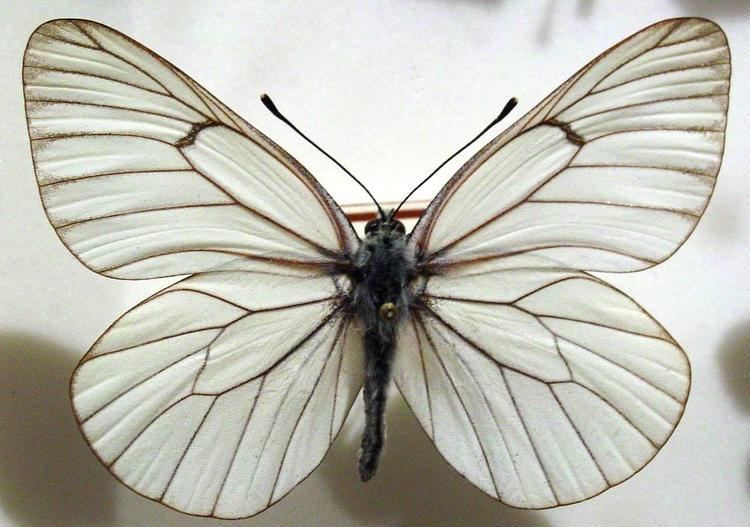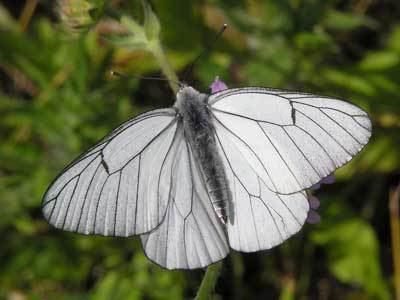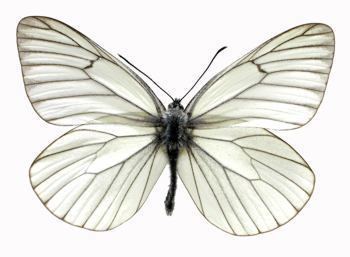Genus Aporia Higher classification Aporia | Scientific name Aporia crataegi Rank Species | |
 | ||
Similar Butterflies and moths, Butterfly, Aporia, Insect, Green‑veined white | ||
The black veined white aporia crataegi
Aporia crataegi, the black-veined white, is a large butterfly of the family Pieridae.
Contents
- The black veined white aporia crataegi
- Black veined white butterflies aporia crataegi courtship behaviour
- Subspecies
- Distribution and habitat
- Description
- Biology
- References
Black veined white butterflies aporia crataegi courtship behaviour
Subspecies
Subspecies include:

Distribution and habitat

It occurs in open forest, grazing land, orchards. lanes, gardens, meadows and thickets throughout most of Europe, temperate Asia, Korea, and Japan. It is normally found at altitudes of 500 to 2,000 metres (1,600 to 6,600 ft). This species is extinct in the British Isles.
Description

The black-veined white has a wingspan of 51 to 70 mm (2.0 to 2.8 in). Females are commonly larger than males. The upperside of both forewings and hindwings is a translucent white boldly veined with black. The underside is similar in the male but the female has brown veining. Moreover, the female loses most of her scales by rubbing her wings together, resulting almost-transparent.

This butterfly can be distinguished from other members of white butterflies of the genus Pieris by its distinctive veined wings.
The eggs are yellow at first, darkening with age. The caterpillars are greenish grey with transverse banding. The pupa is creamy white, marked with black, attached by a silken girdle to a twig.
Biology

The flight period of the black-veined white is between April and July. The adults are quite social and their abundance varies greatly from year to year. The eggs are laid on the food plant, usually a member of the rose family Rosaceae and often on trees and bushes (Malus domestica, Malus micromalus, Pyrus communis, Pyrus serotina, Sorbus intermedia, Sorbus hybrida, Sorbus aucuparia, Crataegus monogyna, Crataegus oxyacantha, Crataegus jozana, Prunus spinosa, Prunus padus, Prunus ssiori, Betula spp., Salix phylicifolia, Chaenomeles lagenaria).
The eggs are laid in groups of 30 to 100. They take about three weeks to hatch. The caterpillars tend to remain in a group with a communal larval web. This species has one generation each year. The caterpillars overwinter communally in a webbing tent with entwined leaves. Caterpillars feed close together on the leaves of the food plant at first, before dispersing in the later developmental stages to other parts of the tree.
The pupal stage lasts about three weeks.
